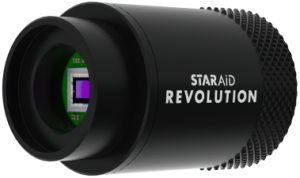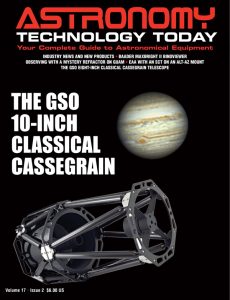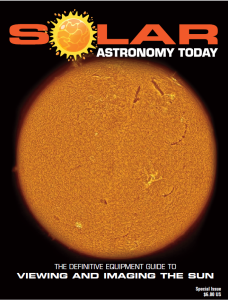The latest version of the StarAid Revolution Standalone Autoguider is the Rev C which replaces the Rev. B. One notable change to the new Rev C version is the power supply and data transmission is now facilitated exclusively via the USB-C port with USB (5.0 V) on the StarAid itself and therefore no longer requires a splitter.
 The StarAid Revolution Standalone Autoguider is an all-in-one solution that comes in a lightweight housing and offers the functionality of camera shutter control, dithering, comet tracking, AI-powered automatic polar alignment and built-in plate-solving.
The StarAid Revolution Standalone Autoguider is an all-in-one solution that comes in a lightweight housing and offers the functionality of camera shutter control, dithering, comet tracking, AI-powered automatic polar alignment and built-in plate-solving.
The StarAid is accessed through the built-in wifi or the supplied USB cable. Even though StarAid autoguiding is fully autonomous, and requires no additional device, there is a StarAid App available to access advanced functionality. It can also be controlled via a web browser through a laptop/smartphone. The ST-4 guiding cable is connected directly to the back of the StarAid Rev C.
The StarAid achieves polar alignment in 2 minutes without the need to have a view of the poles. Simply point your telescope up at the sky and the StarSaid Revolution will determine the exact coordinates to set the axes of your mount. That’s it, no polar scope required.
It provides the ability to start guiding within 30 seconds. Plug in the cable and the StarAid Revolution starts up and operates autonomously tracking and keeping stars centered at high accuracy. If guiding is interrupted, the LED lights will immediately indicate that happening. To fix the problem if needed, access the StarAid app check the reason of the error, read the solution and fix it right away.
The StarAid Revolution tracks dozens of stars simultaneously, many times per second. It automatically tweaks and tunes when needed through the use of an AI algorithm which detects and reduces seeing effects. These ensure the best guiding circumstances and sharpest pictures.
When guiding and imaging comets, select the comet from the object guiding catalogue, point the telescope, and start imaging. StarAid keeps the comet centered, providing the ability to take long uninterrupted sub-exposures.
The StarAid Revolution Standalone Autoguider provides a 2.5mm camera shutter port that is supported by most DSLR and mirrorless camera models. Once StarAid has control over a camera’s remote shutter release, you can configure the exposure time of your camera and the number of images you want to take. Dithering between shots is fully supported, reducing noise and artifacts in your images.
The StarAid Revolution Standalone Autoguider specifications include:
– Sensor: Sony IMX290LL monochrome STARVIS CMOS
– Resolution: 1920 x 1080 @ 12bit
– QE (peak): 75%
– Read noise: 0.72e-
– Pixel Size: 2.9µm
– Telescope connection: ST-4 compatible guide port
– Guidescope interface: Ø 31.65mm (1¼”) x 12 mm standard ocular, or C-mount lens via C-mount adaptor
– Dimensions: Diameter – 39mm; Length – 63mm; Weight – 70 grams
You can learn more about the StarAid Revolution Standalone Autoguider here.

 And to make it easier for you to get the most extensive news, articles and reviews that are only available in the magazine pages of Astronomy Technology Today, we are offering a 1-year magazine subscription for only $6! Or, for an even better deal, we are offering 2 years for only $9. Click here to get these deals which only will be available for a very limited time. You can also check out a free sample issue here.
And to make it easier for you to get the most extensive news, articles and reviews that are only available in the magazine pages of Astronomy Technology Today, we are offering a 1-year magazine subscription for only $6! Or, for an even better deal, we are offering 2 years for only $9. Click here to get these deals which only will be available for a very limited time. You can also check out a free sample issue here.
The sun is more active than it has been in years! If you’d like to learn more the technology behind solar observing, solar imaging and more, you can check out our free publication, “The Definitive Guide to Viewing and Imaging the Sun”. You don’t have to sign up or provide any information, simply click here and enjoy reading!



